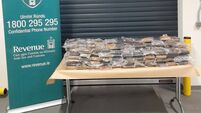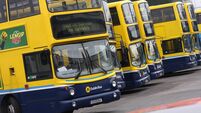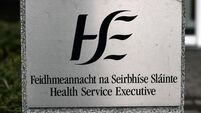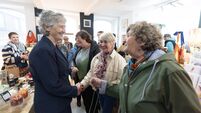Interactive street art unveiled to help public respond to opioid overdoses
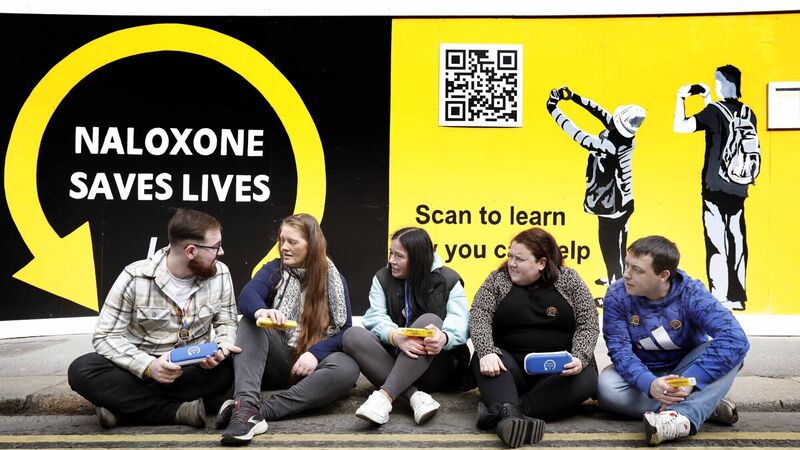
Pictured on Dublin’s Parnell St are, from left, Nicholas Jose Diez McKenna, Ali Stone, Gillian O’Donnell, Catherine Gore and Brian Shanahan from the Naloxone Peer-Led Advisory Group. Picture: Mark Stedman
A new interactive piece of street art aimed at teaching people how to respond to someone overdosing on opiods has been unveiled in Dublin.
The piece, created by artist Deniece Quinn as part of the HSE's Naloxone Programme, depicts two members of the public holding their smartphones up to a QR code which, when scanned, pulls up two HSE videos demonstrating how to people can recognise and respond to an opioid overdose, and how to administer naloxone.
Naloxone is a medicine used worldwide which rapidly reverses an opioid overdose. It attaches to opioid receptors and reverses and blocks the effects of other opioids, keeping a person alive until emergency services personnel arrive.
The often life-saving medication is currently available in Ireland by prescription and comes in two types: intra-muscular and intra-nasal.
According to the Health Research Board (HRB), opioids are the main drug group implicated in drug overdose deaths in Ireland.
The HSE says it has been engaging with key stakeholders and partner services "to expand the provision of training and the availability of naloxone to people who use drugs, their peers, family members and frontline staff who may witness an opioid overdose".
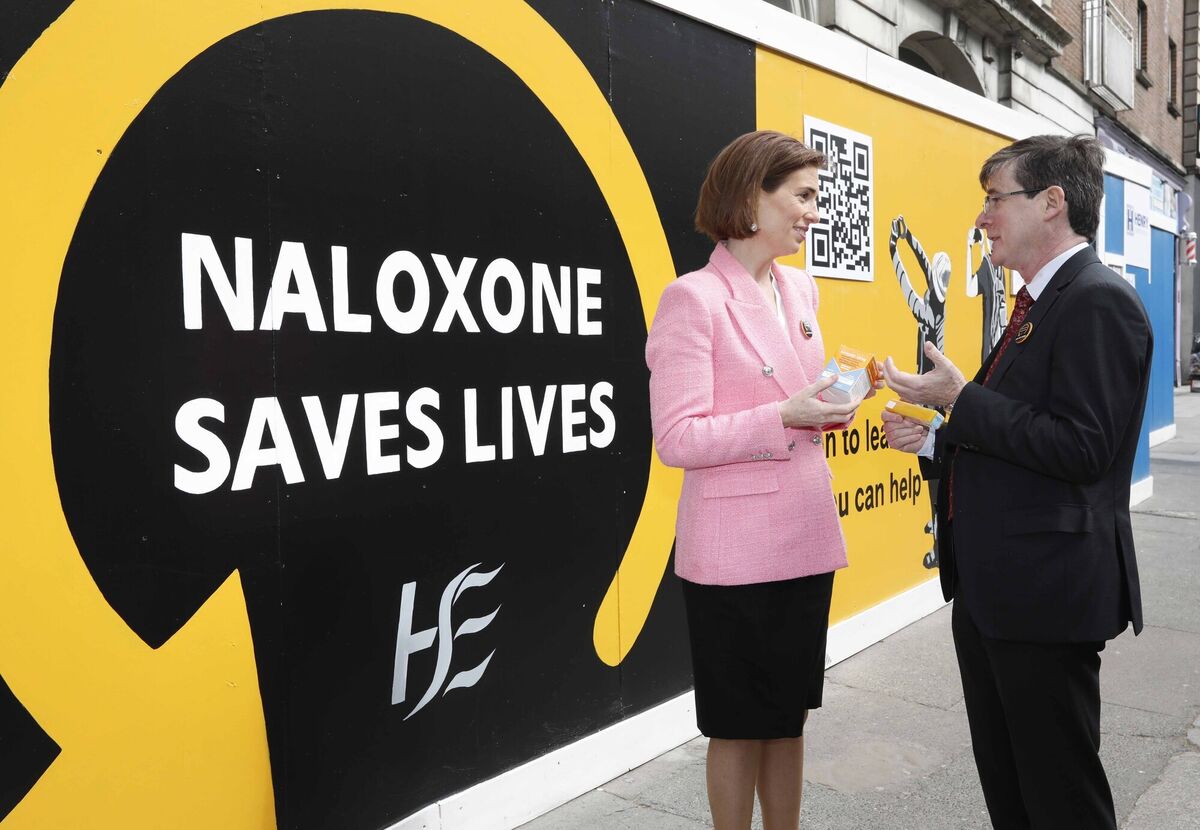
"Naloxone’s potential as an effective tool in preventing drug overdose deaths is recognised by international experts including the WHO and the EMCDDA," said Minister of State for Public Health, Well Being and the National Drugs Strategy, Hildegarde Naughton.
"The HSE’S Naloxone Programme is a vitally important tool in the national effort to minimise the harms caused by substance use and will help save lives. Improving public awareness of naloxone benefits us all."
Ms Naughton said she hoped the creative artwork would help "educate the public and encourage engagement on a topic that has such a huge impact on society."
“I welcome the approach being taken by the HSE in partnership with service providers, community groups and people with lived experience of drugs in helping to empower families to recognise and respond to a loved one’s drug-related overdose," she added.
Echoing Ms Naughton's view, HSE addiction services national clinical lead Professor Eamon Keenan said he was hopeful the artwork could "reduce stigma around the whole area of drug overdose and direct people towards our online information and resources via the QR code embedded in the image."
Both Prof Keenan and Ms Naughton thanked Ms Quinn for her work on the piece, which is now on display on Parnell Street in Dublin city centre.



